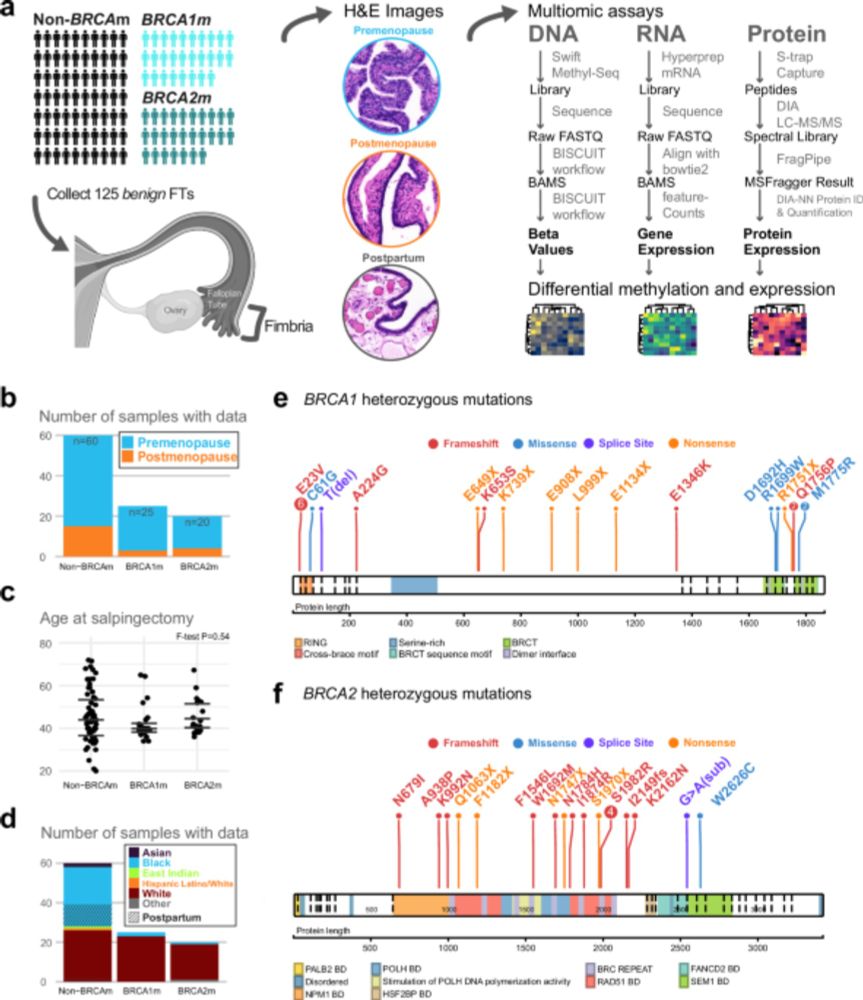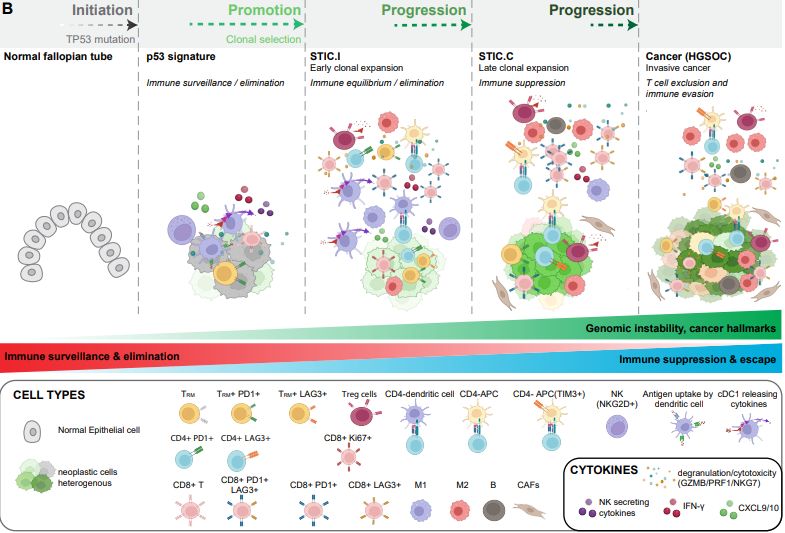Yes, yes, yes!!!! 🙌🏻🙌🏻🙌🏻
29.06.2025 23:46 — 👍 1 🔁 0 💬 0 📌 0Melanie Weigert
@mewe03.bsky.social
Scientist. Biomarkers. Ovarian Cancer. Travel. Food. My dog. Plants.
@mewe03.bsky.social
Scientist. Biomarkers. Ovarian Cancer. Travel. Food. My dog. Plants.
Yes, yes, yes!!!! 🙌🏻🙌🏻🙌🏻
29.06.2025 23:46 — 👍 1 🔁 0 💬 0 📌 0
Surprising findings of BRCA mutations on the Fallopian tubes. Result of a tremendous team effort with @shenhui1986.bsky.social @vainstitute.bsky.social, Chuck Drescher @fredhutch.bsky.social, and Jarrod Marto @danafarber.bsky.social.
@pennmedcso.bsky.social
www.nature.com/articles/s41...
Looking forward to seeing you all there! #science #standupforscience2025 #phdchat #postdoc #research
04.03.2025 00:45 — 👍 2 🔁 0 💬 0 📌 0
Now online in Cancer Discovery: LINE-1 ORF1p Mimics Viral Innate Immune Evasion Mechanisms in Pancreatic Ductal Adenocarcinoma - by Eunae You, David Ting, and colleagues doi.org/10.1158/2159...
10.02.2025 15:23 — 👍 12 🔁 4 💬 0 📌 0Always enjoyed joining the syndicate talks! Excellent for early career scientist! #Phd #postdoc #ovariancancer
08.02.2025 23:00 — 👍 2 🔁 0 💬 0 📌 0
Interesting, I wonder how having a supportive PI/ lab environment that actually nurtures postdocs and having a lab that is well funded play into these hit publications? #science #academia #phdchat #phdforum #postdoclife
www.pnas.org/doi/10.1073/...
Personality is how you respond on a typical day. Character is how you show up on a hard day.
It's easy to demonstrate fairness, integrity, and generosity when things are going well.
The real question is whether you stand by those values when the deck is stacked against you.

What a way to start the New Year!
Our manuscript on the single cell pre- and postmenopausal human fallopian tube is out!
www.nature.com/articles/s41...

Could breast cancer survival rates be improved simply by timing treatment to a specific stage of the menstrual cycle? Mouse and human data suggest sensitivity to chemotherapy is affected by fluctuations in ovarian hormones.
www.nature.com/articles/d41...

Schematic representation of HGSCO progression, emphasizing the temporal development of hallmark cancer features and the dynamic interplay and interactions between immune cells and precancer/cancer cells. Cancer often starts with oncogenic changes (mutations, aneuploidy, and other cancer hallmarks), under selective pressure. These cells may remain latent for decades. Only a subset of these “phenotypically normal” but mutated clones undergo clonal expansion and acquire additional mutations, ultimately developing into cancer. Early on, despite limited genomic instability, innate immune responses, including the NK-cDC1-CTL axis and tissue-resident memory T cells (TRM), help contain p53 signature cells. Increasing aneuploidy or extrinsic factors can enhance immune surveillance, potentially eliminating precancer clones before significant proliferation occurs. During early STIC expansion, there is pronounced IFN response activation, with activated cDC1 and APCs, and NK cell-secreted chemokines, further attracting cDC1. This environment suggests active immune surveillance and is accompanied by interactions among APCs, activated CD4+, and CD8+ T cells. However, immunosuppressive cells, such as M2-like macrophages and Tregs, also emerge, indicating a complex equilibrium where cytotoxic and suppressive forces coexist. As STIC lesions advance, there is a reduction in CD8+ T cells and the interactions between APCs and CD4 T cells, along with an increase in exhausted CD8+ CTL and CD4+ cells expressing LAG3, almost no NK and cDC1 cells, and more suppressive APCs. The transition from STIC to overt cancer involves hallmark mechanisms such as TGF-β signaling, which excludes CTLs, changes in cytokine and fibroblast profiles, and induction of EMT and migratory programs. Dotted arrows indicate the hypothetical timing of these events, suggesting a prolonged interval from p53 signature to early STIC, followed by a more rapid progression from early to late STIC.
Now online in Cancer Discovery: Multimodal Spatial Profiling Reveals Immune Suppression and Microenvironment Remodeling in Fallopian Tube Precursors to High-Grade Serous Ovarian Carcinoma - by Tanjina Kader, Jia-Ren Lin, Clemens Hug, Ronny Drapkin, Sandro Santagata, et al. doi.org/10.1158/2159...
20.12.2024 15:54 — 👍 34 🔁 6 💬 2 📌 2
Generative #AI accuracy outperformed experts for detection of ovarian cancer via ultrasound
nature.com/articles/s41...